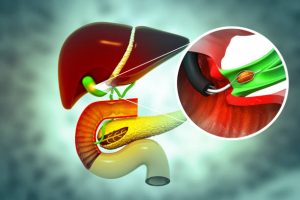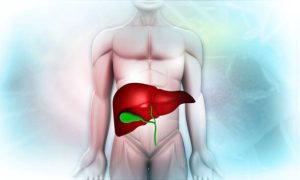
Young woman with gingivitis holding toothbrush isolated. Girl suffering from gum pain holding toothbrush. People holding toothbrush with gum problem
What is Bleeding Gums?
Bleeding gums refer to the condition where the gums bleed easily, typically during brushing, flossing, or eating. It is often a sign of gum disease but can also be caused by other factors like poor oral hygiene, vitamin deficiencies, or systemic health issues.
Types of Bleeding Gums
- Gingivitis-related: Caused by plaque buildup leading to gum inflammation.
- Periodontitis-related: A more severe form of gum disease where the infection affects the bone supporting the teeth.
- Trauma-induced: From physical damage, such as aggressive brushing or dental appliances like braces.
- Systemic-related: Due to underlying health conditions like diabetes or clotting disorders.
Main Causes of Bleeding Gums
- Poor oral hygiene (plaque and tartar buildup)
- Gum diseases like gingivitis and periodontitis
- Vitamin C or K deficiency
- Hormonal changes (e.g., pregnancy, menopause)
- Ill-fitting dental appliances
- Blood-thinning medications
- Chronic conditions like diabetes
- Aggressive brushing or improper flossing
- Smoking or tobacco use
Signs and Symptoms of Bleeding Gums
- Blood on your toothbrush or in saliva
- Red, swollen, or tender gums
- Persistent bad breath
- Receding gums
- Loose teeth in severe cases
- Pain or discomfort while eating or brushing
Risk Factors for Bleeding Gums
- Smoking or chewing tobacco
- Poor oral hygiene
- Family history of gum disease
- Hormonal changes in women
- Certain medications like anticoagulants
- Systemic diseases such as diabetes
- Malnutrition (lack of essential vitamins)
How to Prevent Bleeding Gums
- Brush your teeth twice a day with a soft-bristled brush.
- Floss regularly to remove plaque between teeth.
- Use mouthwash to kill bacteria and reduce plaque buildup.
- Maintain a balanced diet rich in vitamins C and K.
- Avoid smoking and reduce alcohol consumption.
- Visit the dentist regularly for cleanings and check-ups.
- Stay hydrated to maintain saliva flow, which helps cleanse the mouth.
How Bleeding Gums Are Diagnosed
- Dental Examination: A dentist will examine the gums for signs of swelling, redness, and bleeding.
- Medical History: Reviewing underlying conditions or medications that could contribute.
- X-rays: To check for bone loss or severe periodontal disease.
- Gum Pocket Measurement: A probe is used to measure the depth of the pockets between the teeth and gums, indicating the severity of gum disease.
Treatment for Bleeding Gums
- Professional Dental Cleaning: Scaling and root planing to remove plaque and tartar buildup.
- Medications: Antibacterial mouthwash or antibiotics for infection.
- Surgical Intervention: In severe cases, surgery like gum grafts or flap surgery may be necessary.
- Addressing Underlying Conditions: Managing health conditions such as diabetes can help alleviate symptoms.
Home Remedies for Bleeding Gums
- Saltwater Rinse: Rinse your mouth with warm saltwater to reduce swelling and bacteria.
- Hydrogen Peroxide Rinse: Diluted hydrogen peroxide can help with gum inflammation.
- Oil Pulling: Swish coconut or sesame oil in your mouth for 10-15 minutes to reduce bacteria.
- Tea Bags: Apply a used tea bag (especially green tea) to the gums for its anti-inflammatory effects.
- Clove Oil: Dab a small amount of clove oil onto the gums for its antibacterial and pain-relieving properties.
Ayurvedic Medicine to Cure Bleeding Gums
- Triphala: Used as a mouth rinse to reduce inflammation.
- Neem: Known for its antimicrobial properties, neem twigs can be used to brush teeth.
- Babool (Acacia Arabica): Chewing babool bark strengthens the gums.
- Manjistha (Rubia cordifolia): Helps in reducing gum inflammation.
- Licorice Root (Yashtimadhu): Soothes the gums and reduces bleeding.
Precautions
- Avoid hard-bristled toothbrushes that may injure the gums.
- Do not brush aggressively; be gentle on the gums.
- Limit sugary foods and beverages.
- If using dental appliances, ensure they fit properly to avoid irritation.
- Seek professional help if bleeding persists for more than a week.
Self-Care Tips
- Maintain a consistent oral hygiene routine.
- Use toothpaste formulated for gum health.
- Consider using an electric toothbrush for better plaque removal.
- Eat a diet rich in fruits, vegetables, and whole grains to support gum health.
- Chew sugar-free gum to promote saliva production.
Conclusion
Bleeding gums are often an early warning sign of gum disease or other underlying health conditions. By maintaining good oral hygiene, eating a balanced diet, and visiting the dentist regularly, you can prevent and treat bleeding gums. In cases of persistent bleeding, consult a dentist or healthcare provider to address any underlying issues.
Disclaimer
The information provided is for educational purposes and should not be used as a substitute for professional medical advice, diagnosis, or treatment. Always consult your dentist or healthcare provider for any concerns regarding gum health.
Additional Tips
- Change your toothbrush every 3-4 months or when the bristles fray.
- Rinse your mouth after eating acidic or sugary foods.
- Avoid using tobacco products to reduce gum irritation and bleeding.
- Practice stress-reducing techniques, as stress can contribute to oral health problems.








